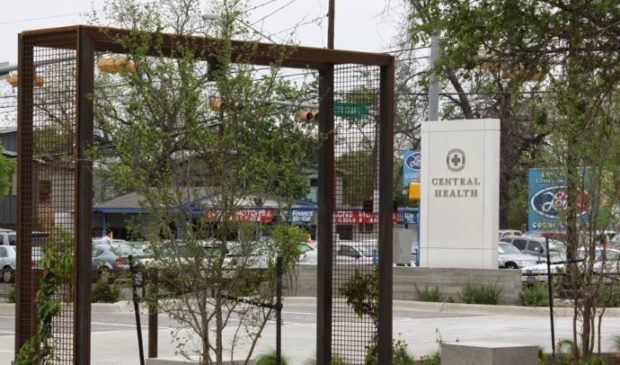Central Health budget passes after last-minute questions dominate vote
Friday, September 20, 2019 by
Katherine Corley After a nearly five-hour meeting, Central Health’s volunteer board of managers voted to approve Central Health’s Fiscal Year 2019-20 budget on Wednesday night. During the hours leading up to the vote, multiple board members introduced significant new questions about the budget expenditures, despite having discussed the budget at four previous board meetings since the budget was introduced July 31.
Board members Maram Museitif and Julie Oliver expressed concern over the sizable increase in the health care delivery salary and benefits line item, which grew from $3.69 million in FY 2018-19 to $15.37 million in FY 2019-20. The salary and benefits line item includes 30 percent benefits as well as annual merit increases up to 3 percent, and does not include Central Health administration salaries and benefits, which are captured in a separate section of the budget.
“I think we have an obligation to let the public know what the actual (salary per employee) numbers are,” Oliver said. “These are big numbers.”
Of the $11.7 million increase in salaries and benefits, $8.1 million pays for the FY 2019-20 addition of 61 staff members from the Community Care Collaborative, a public-private partnership between Seton Healthcare and Central Health, which grows the total number of Central Health staff from 46 full-time positions to 107, Central Health Vice President of Finance Lisa Owens said in an email.
Central Health is shifting Community Care Collaborative expenses and staff back into its budget in preparation for the FY 2021-22 expiration of the Delivery System Reform Incentive Payment 1115 Medicaid funding, which the Community Care Collaborative was established to administer.
An additional $2.85 million of the health care delivery salaries and benefits is budgeted for operational support staff who might be needed to support the shifting of services from the Community Care Collaborative to Central Health, such as patient care management staff, Owens said. There are no specific positions attached to this number, and these positions could be filled internally or with contractors if needed.
Additionally, Oliver, who did not attend the previous two board meetings on Sept. 11 and Aug. 28, questioned the large jump in “other professional services” funding – a line item under expenses for health care delivery – from $365,000 in FY 2018-19 to $4.49 million in FY 2019-20. That increase is also due to the shifting of funds from the Community Care Collaborative budget to the Central Health budget for FY 2019-20. The additional $4 million, which was formerly a part of the Community Care Collaborative budget, is primarily paying for claims payment services – a third-party administrator that will process current claims and support a new direct payment model for hospital services, said Owens.
Later in the meeting, Board Member Cynthia Valadez asked for assurances that Central Health would use FY 2019-20 budget funds to extend residents’ re-enrollment period from six to 12 months for the Medical Access Program, a local program funded by Central Health that covers health care for low-income residents who are not eligible for or enrolled in Medicaid or Medicare and do not have private insurance. Currently, Travis County residents must re-enroll in MAP every six months to maintain eligibility for its services. This change would mean that residents would only have to re-enroll every 12 months instead, reducing the logistical burden on low-income residents to maintain their health care.
“We’ve been waiting for improvements to the MAP program for many years, and one of the things that we are required to do, with respect to our mission, is to provide for those that need care the most,” Valadez said.
Board Member Sherri Greenberg said that she “shared (Valadez’s) passion on this issue,” and suggested adding language to the FY 2019-20 budget resolution that would specifically prioritize extending MAP eligibility from six to 12 months as a key part of increasing access to health care.
The board amended the budget resolution to include the suggested MAP language, and finally voted to adopt the FY 2019-20 budget after a long evening. The total Central Health FY 2019-20 budget expenditures are approximately $291 million, up from about $258 million in FY 2018-19. Travis County property taxes are Central Health’s primary source of revenue.
“Last year Central Health funded care for 1 in 7 Travis County residents, or about 184,000 people, and we’re planning to care for more people in the years to come,” said Mike Geeslin, president and CEO of Central Health, in a press release announcing the budget approval. Per the press release, Central Health expects to pay for 50,000 more primary care visits next year than the 600,000 visits funded in FY 2018-19, most through Central Health-funded CommUnityCare Health Centers, which operates 25 clinics throughout the county.
The Travis County Commissioners Court, which has the final say, is scheduled to vote on the Central Health budget on Tuesday, Sept. 24. At the next board of managers meeting on Wednesday, Sept. 25, the board is scheduled to vote on the FY 2019-20 Central Health tax rate.
This story has been changed to correct a name and a typo. Photo courtesy of Google Maps.
The Austin Monitor’s work is made possible by donations from the community. Though our reporting covers donors from time to time, we are careful to keep business and editorial efforts separate while maintaining transparency. A complete list of donors is available here, and our code of ethics is explained here.
You're a community leader
And we’re honored you look to us for serious, in-depth news. You know a strong community needs local and dedicated watchdog reporting. We’re here for you and that won’t change. Now will you take the powerful next step and support our nonprofit news organization?









